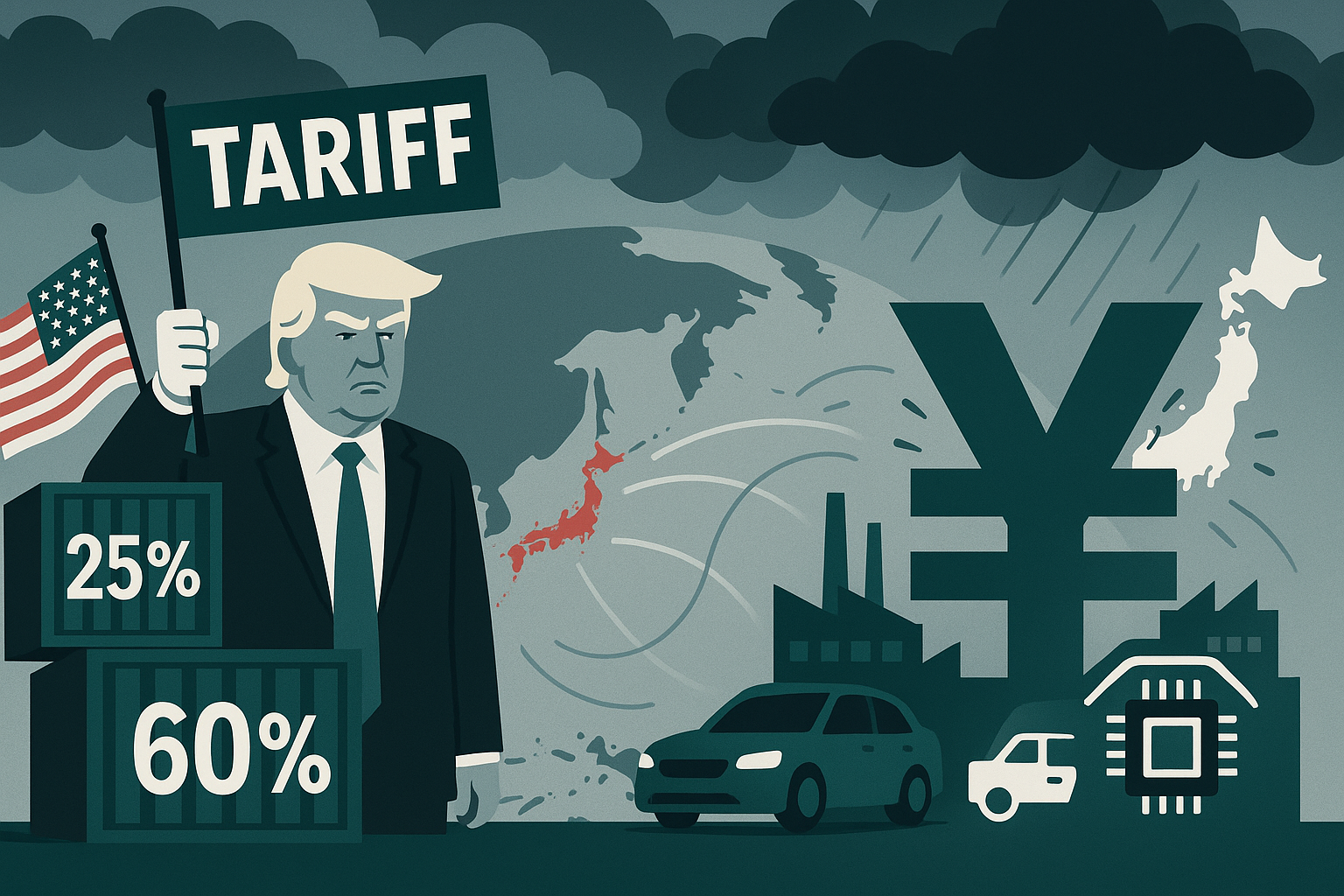Global Trade Reversal and Japan’s Strategic Response —
Date: July 18, 2025 Author: Senior Economist
Overview: The Second Tariff Shock Begins
In 2025, President Donald Trump re-entered the White House and reinstated his “America First” trade policy. His administration has announced a sweeping new wave of tariffs targeting both strategic and politically symbolic industries.
Key highlights of the new tariff policy:
- Up to 60% tariffs on imports from China, Mexico, the EU, and Japan
- Specific targeting of autos, semiconductors, batteries, steel, and agriculture
- Possible re-designation of Japan as a currency manipulator, pressuring the yen
This marks not only a repeat of the 2018–2020 tariff cycle but a more aggressive decoupling from multilateral trade norms, creating profound risk for Japan’s export-oriented economy.
Sectoral Impact on Japan
🚗 Automotive Industry
- Exports of finished vehicles and auto parts to the U.S. exceed ¥5 trillion annually
- A tariff hike from 2.5% to 25% would undermine export margins and profit models
- Japanese automakers face renewed pressure to localize production in the U.S., despite cost challenges and FX volatility
💻 Electronics & Semiconductors
- Japan is deeply integrated into U.S.-China tech supply chains
- Equipment, sensors, and specialty materials will be affected by dual regulatory exposure
- Japanese firms risk collateral damage from both U.S. and Chinese retaliation
🌾 Agriculture & Fisheries
- Existing tariff reductions under the U.S.-Japan Trade Agreement are now under threat
- Japanese produce and seafood may lose competitiveness against subsidized U.S. goods
Macroeconomic Outlook
| Indicator | Expected Impact | Notes |
|---|---|---|
| Real GDP | −0.4% to −0.7% | Export shock and weakened capex |
| FX (Yen) | Downward pressure | Currency manipulation label risk |
| Stock Market | Volatility and sector-specific decline | Especially auto, precision, chemicals |
| Corporate Earnings | Negative outlook for manufacturers | Particularly export-heavy firms |
Scenario Forecasts
| Scenario | Description | Impact on Japan | Risk Level |
|---|---|---|---|
| 🟢 Limited Tariff Measures | Selective and negotiable tariffs | Moderate impact; manageable | Low |
| 🟠 Full Tariff + FX Tensions | Broad tariffs and yen pressure | Significant macro & political risk | Medium |
| 🔴 Escalating Trade War | Retaliatory cycle; WTO disruption | Structural threat to global trade | High |
Japan’s Strategic Response: Dual Approach
🔰 Defensive (Short-Term)
- Emergency tax support and liquidity facilities for heavily exposed sectors
- Energy subsidies and FX hedging support in case of a sharp yen depreciation
- Diversify export markets toward ASEAN, India, and the Middle East
🚀 Offensive (Mid to Long-Term)
- Shift to IP, brand-based, and service exports less sensitive to tariffs
- Promote domestic demand and sustainable green growth (GX)
- Recalibrate trade diplomacy: deepen ties with CPTPP, EU, and India
Conclusion: From External Shock to Strategic Inflection Point
Trump’s tariffs present a clear and present danger to Japan’s economy—particularly its legacy export model.
However, this also represents an opportunity to restructure Japan’s industrial and trade strategy:
By accelerating the transition to a resilient, diversified, and knowledge-based economy,
Japan can transform this geopolitical shock into a long-term catalyst for reform and competitiveness.


